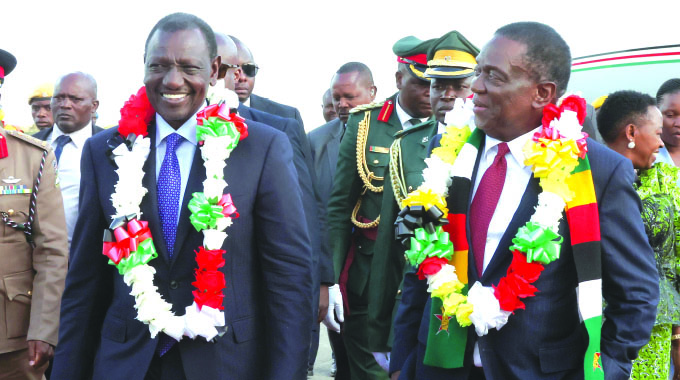GDP data shows need for devolution

Mukudzei Chingwere
Herald Reporter
The provincial data for gross domestic product (GDP) show glaring inequalities in the distribution of the country’s wealth with Harare alone accounting for 39,55 percent of the total while the other nine provinces share the remaining 60,44 percent.
The data puts into perspective the New Dispensation’s vigorous push for devolution and decentralisation which is meant to expedite development in provinces lagging behind.
GDP is the final value of goods and services produced within the geographic boundaries of a given area during a year and it is widely viewed as a key indicator of the economic performance of that given area.
Information and Publicity Minister Senator Monica Mutsvangwa said after yesterday’s Cabinet meeting that Finance and Economic Development Minister Professor Mthuli Ncube told Cabinet that predominately rural provinces made the lowest contribution to the national GDP.
The lowest contributors, according to the 2012-2018 data compiled by ZimStat were Mashonaland Central, Matabeleland North, Manicaland, Matabeleland South and Masvingo.
Joining Harare as the better contributors are the more urban provinces of Bulawayo, Mashonaland East, Mashonaland West and Midlands.
“Cabinet noted with satisfaction that this is the first such compilation since Independence, which shows the disaggregated figures per province depicting contributions to national economic performance.
“Compilation and publication of the provincial GDPs buttresses implementation of the devolution and decentralisation programme, which brings with it increasing demand for sub-national socio-economic statistics,” she said.
The provincial GDPs in 2018 were: Bulawayo US$2.26 billion, Harare US$9.56 billion, Manicaland US$1.46 billion, Mashonaland Central US$1.08 billion, Mashonaland East US$2.22 billion, Mashonaland West US$2.14 billion, Masvingo US$1.41 billion, Matabeleland North US$1.16 billion, Matabeleland South US$940 million, and Midlands US$1.94 billion.
Since populations vary, per capita statistics give a clearer result and while the rural-urban divide is strong, big mining and tourism centres can make a difference.
The per capita provincial GDPs for 2018 were: Bulawayo US$3 048, Harare US$3 614, Manicaland US$743, Mashonaland Central US$784, Mashonaland East US$1 408, Mashonaland West US$1 206, Masvingo US$820, Matabeleland North US$1 333, Matabeleland South US$1 186, and Midlands US$1 026.
Minister Mutsvangwa said: “Government reiterates that, going forward, collecting and
analysing statistical data disaggregated by province and subsector economic activities will continue to form ZimStat’s core functions.
“The data will be key in guiding the economic reform agenda of the Second Republic in order to guarantee equitable development as we move towards Vision 2030.
“Ministers of State for Provincial Affairs will make use of the data in coming up with provincial development plans. The data will henceforth be published for the information of the general citizenry.”
Despite the spirited attempts for decentralisation, it does not negate the fact that Zimbabwe remains a unitary State with one centre of power but with a deliberate plan to drive the devolution agenda aimed at taking development to every corner of the country with major inputs from the local communities.
On the issue of salaries, Professor Ncube said the wages will keep on improving as the economy grows and Government has been clear that all expenditure must be tied to revenue, with no borrowing for recurrent expenditure.








Comments